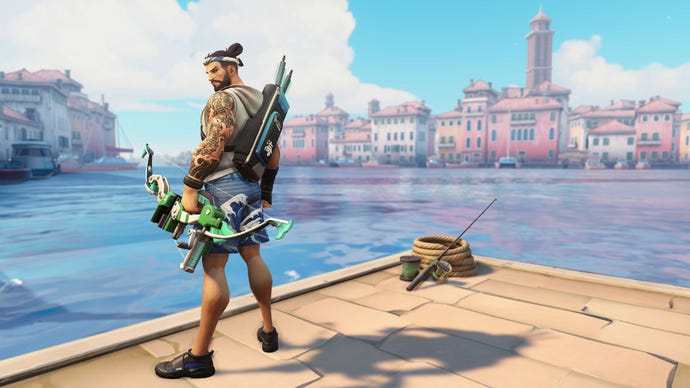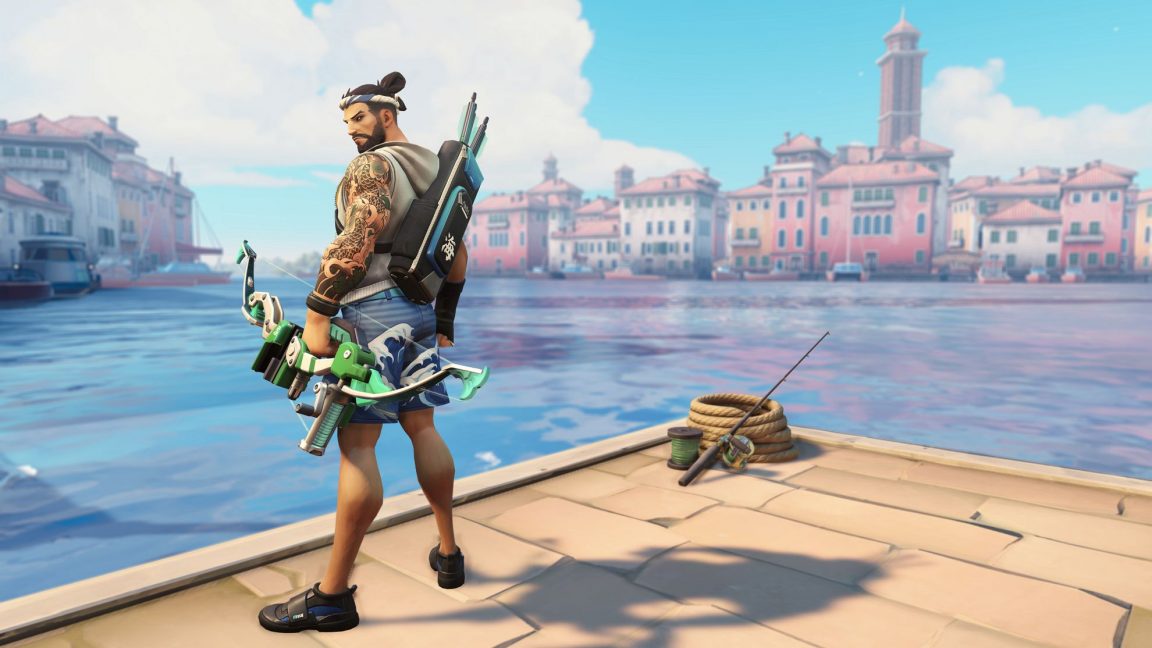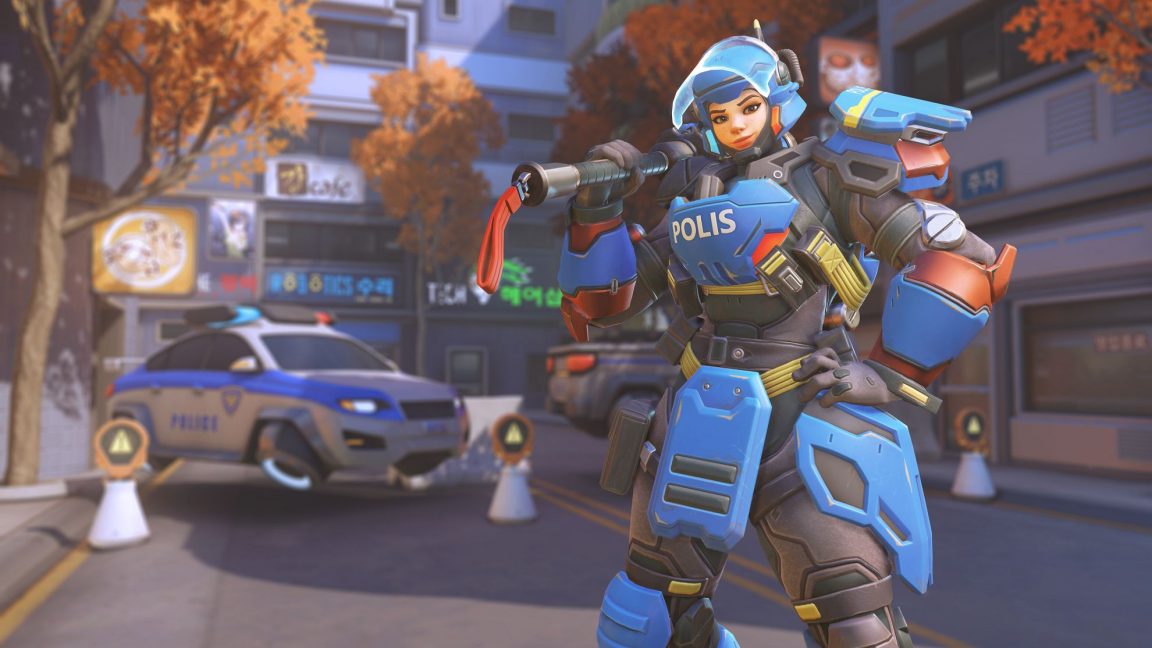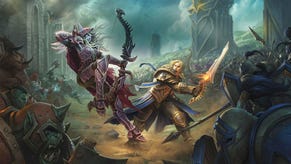Overwatch's Role Queue lock creates more problems than it solves
Role Queue forces Overwatch teams to have two people in each of the hero categories - and it's another mistake for Blizzard's competitive shooter.
The Overwatch League’s stage three finals were a clash between two very different team compositions. There was plenty of variation in heroes, but broadly the San Francisco Shock preferred a three tank, two support, one damage dealer setup while the Shanghai Dragons leaned in the other direction, fielding three damage dealers and just a single tank, the wheel-bound hamster Hammond.
Neither of these compositions will be possible when the League returns next week, because teams will be locked into having two people in each of the hero categories. So, too, will regular players who want to enjoy ranked or quick play in the game. There’ll be an unlocked option available in the arcade, but it’s clear that most matches will take place under these new restrictions.
The pressure for Blizzard to introduce this lock has come from two directions. In the League, a team composition known as GOATS dominated. Named after the second tier team that popularised it, or more simply called three-three, it featured three tanks, three supports, and no damage-focused heroes. It was deeply unpopular with fans, generally considered far less interesting to watch without the flashy plays of a sniping Widowmaker or a dashing Genji.
The other issue seems at first glance to be the opposite problem. In all but the very top levels of ranked play, damage dealing heroes are much more common picks than tanks or healers, making it difficult to get a balanced team. But looking deeper illuminates the same issue. Damage is what’s popular in Overwatch, whether it be playing or viewing. Enforcing damage dealers but ensuring they’re kept in moderation might seem like a fix, but it actually restricts the game without examining why it’s happening in the first place.
In the developer update video about this change, game director Jeff Kaplan lays out the arguments for implementing the lock. “I want to dispel any misconception that the reason that we are implementing this feature is to change the [Overwatch League] meta,” he says, despite this being where most of the pressure from the fans has stemmed from.
Regardless of whether killing GOATS for good was the intent, this will be a major impact of the change. And despite Kaplan saying that “role queue is a very complicated feature that requires a lot of testing,” explaining why there’ll be a test season for regular players beginning in the middle of August, it’ll be thrown into the League next week. This is the first time a change has hit the esport before the live game, a clear suggestion at where the priority lies, never mind whether changing the rules of an esport three-quarters of the way through its season undermines its integrity.
And while it may wipe out the currently unpopular composition, it will also severely limit future metas. In the shift away from GOATS that was already happening, many teams were fielding now-impossible but exciting (and damage-focused) combinations. When the dust settles on this change, it’ll be harder for whatever people get bored of next to be innovated out of in the same way. Kaplan attempted to explain this away by comparing it to Shakespeare writing sonnets, which are beautiful despite their constraints, but selecting from a limited pool of heroes isn’t quite the same as working within the vast possibilities of language. Numerically, there are far fewer available team compositions, and that’ll stymie change in the long run.
It’ll cause a handful of smaller restrictions, too. Flex players, who previously flitted between hero types, are essentially eliminated. In a special edition of the League’s talk show Watchpoint, Overwatch senior product director Jon Spector praised this, saying it’ll allow players to know what their speciality is, but players like Choi “Hotba” Hongjoon specialised in that flexibility. Gone, too, are last minute swaps to stall out a point, like a support player flicking over to the speedier Tracer, which often led to exciting, drawn out scraps.
Meanwhile, the vast majority of Overwatch’s player base is not professional. And they’d rather play damage dealers. Even in the update video, Kaplan expresses doubts about queue times for those who do want to spend some time as Junkrat or Soldier: 76. According to a tweet made by top streamer EeveeA in February, Kaplan had previously claimed that while tanks would instantly get into games, damage players would have to wait 13-29 minutes.
There’ll be incentives to play lesser-liked categories, but it’s still indicative of a wider problem with the game. There are simply more damage dealers - 16 compared to seven healers and tanks. And they’re apparently more fun to play and watch for the majority of people. That’s not a problem that can be fixed with role lock.
But instead of examining these issues, Blizzard’s been making changes based on fan pressure for a long time. The first major example was the Mercy changes that occurred in 2017. Mercy was never played at the esports level when she had her original mass resurrection ability, but regular players complained that it had too much impact for a “low skill” hero. (By “skill” they mostly meant traditional FPS aim; her movement and game sense requirements can be very challenging to play well.) In response to these fans, and generally against the wishes of those who actually played Mercy, Blizzard changed her ultimate and put a single resurrection ability into the game.
This turned out to be massively overpowered, throwing both the regular game and the esport into chaos for months as Blizzard repeatedly nerfed her. It didn’t work out for anyone. And yet similar changes continued, notably removing Symmetra’s lock-on beam, again because of questions of "skill". She still barely makes an appearance in games at any level, so the only real difference is that she’s less accessible to those with motor disabilities, or less welcoming to those who haven’t played many shooters before.
GOATS required huge levels of skill, in terms of team communication and use of cooldowns. But it doesn’t look as cool as clicking on heads as Widowmaker. It’s part of this same shift of removing things that made Overwatch different from other games to acquiesce to those fans who value "skill" (read: aim) above everything else. (It’s also worth noting exactly which fan concerns they’re listening to, because it’s not the valid questions of black women asking for representation in a game that sells itself on diversity).
Increased queue times, decreased meta variety, an esport undermined in its season’s eleventh hour. Pushed for by fans who want to see more sniping montages, something that was already returning under its own steam. It's duct tape used by Blizzard to avoid the deeper seated questions of why damage is so much more popular in the first place. None of this is surprising considering the game’s trajectory over the past couple of years, but it is a move in the same unfortunate direction.






.jpg?width=291&height=164&fit=crop&quality=80&format=jpg&auto=webp)





